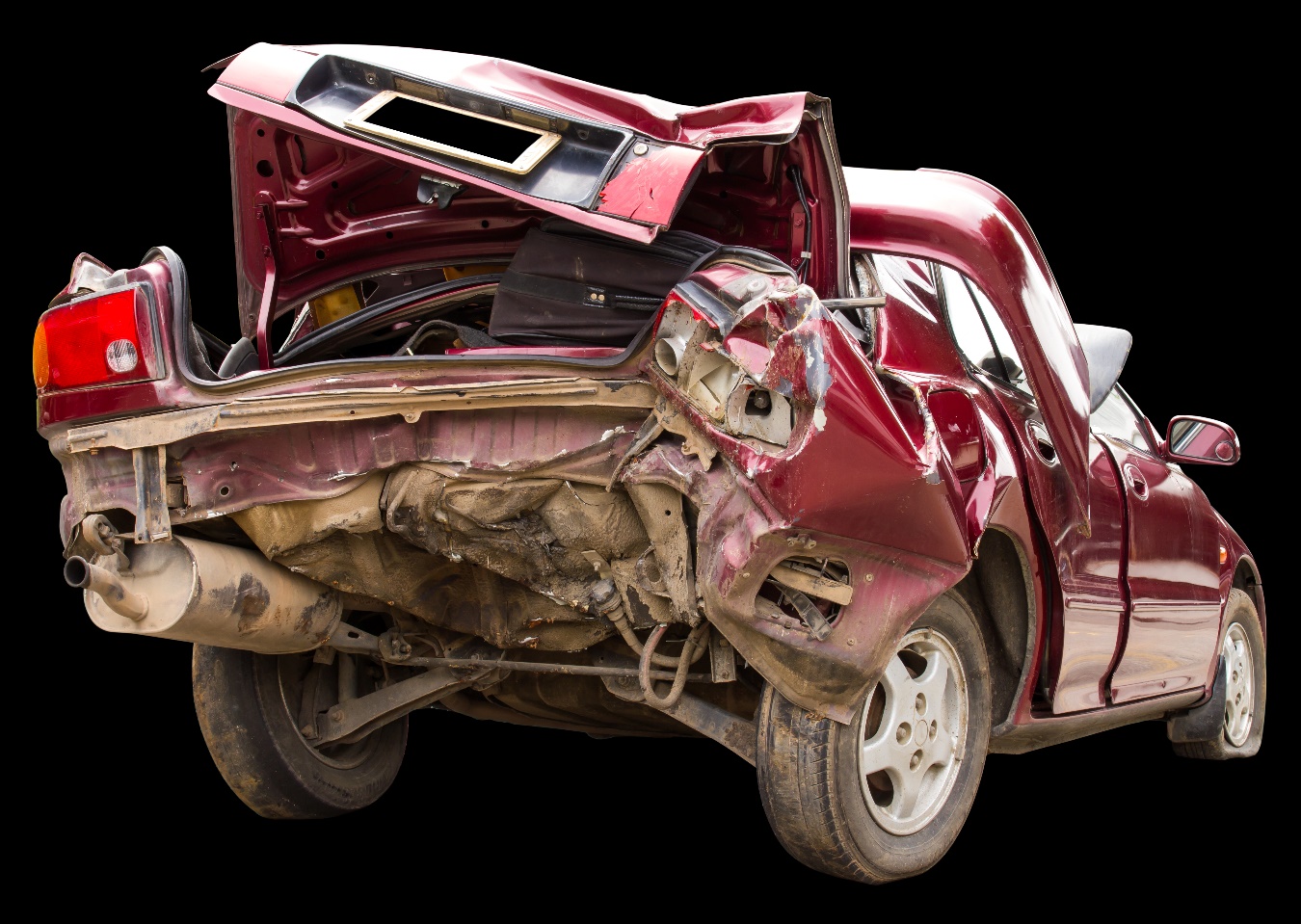Driving a car is an undeniably hazardous activity, but this is a fact that many of us take for granted, more or less. Every day, we climb into a wheeled vehicle weighing a couple tons, and we drive it in very close proximity to other heavy vehicles at a high rate of speed. It’s not surprising that accidents happen—or that they sometimes lead to serious injury.
One of the scariest types of automobile accidents is the rear-end crash. This occurs when a car or truck slams into the back of another vehicle. In these cases, the occupants of the impacted vehicle can do little or nothing to avoid the crash; often, they never even see it coming. These accidents may also leave the victims with severe injuries.
How Rear-End Accidents Happen
These kinds of accidents can take place pretty much anywhere—at a four-way intersection, on the highway, on a dirt road, in a parking lot, and wherever else multiple vehicles are in operation. The characteristic rear-end accident involves a vehicle that has come to a stop (usually to obey a traffic signal or to avoid hitting autos or pedestrians) and a second vehicle, immediately behind it, which fails to stop, resulting in an accident.
Alternatively, a rear-end car or truck accident can occur when a vehicle in motion is struck from behind by another vehicle traveling at a higher rate of speed.
Frequently, these incidents are quite minor in nature, especially if the vehicle responsible for the accident is not moving rapidly when impact occurs. This is not always the case, however, and these high-impact accidents are what we are focusing on in this article.
Why do these accidents occur? There are a number of possible causes.
- Following too closely. Even attentive drivers sometimes fail to keep a proper distance between themselves and the car in front. If the other car stops suddenly, the trailing car can’t react in time to avoid impact. That’s why it’s a good idea to observe the “three-second rule”: The vehicle in front of you should always be far enough ahead that it takes your car three full seconds to pass a specific point in the road after the other car does. Similarly, it’s also wise to keep a safe distance from other cars while you’re stopped at an intersection.
These accidents frequently result in only minor damage, as the second car is usually able to hit the brakes to minimize the effects of the crash, but severe injuries can and do happen as well.
- Driving while fatigued. In our fast-paced world, a lot of us find ourselves behind the wheel when we’re tired, or even practically falling asleep. It’s an undeniably dangerous practice, however. Fatigue slows us down—but it doesn’t slow our cars down. A lot of accidents happen every year because a driver is too tired to react in time to avoid striking another vehicle. These accidents can be especially bad if a weary driver falls asleep behind the wheel.
- Driving while intoxicated. It’s no secret that drinking and driving is a terrible combination. Alcohol isn’t the only substance that can impair one’s driving ability—marijuana, opiates, and some prescription drugs are dangerous as well. Far too many people underestimate the diminishment of situational awareness and reaction time that result from ingesting these substances. Some even claim that they drive better when under the influence. This is a dangerous delusion.
- Distracted driving. This has always been a problem, but it has gotten much worse in our age of cell phones and other mobile devices. A lot of people have a habit of talking on the phone or checking their messages while hurling down the highway at 65 miles per hour. That’s not just dangerous; it’s often illegal. The State of Texas prohibits texting while driving, and dozens of cities across the state ban the use of cell phones altogether while operating a vehicle.1
Bear in mind, however, that distracted driving doesn’t necessarily involve electronic devices. Eating while driving can also cause an accident of this nature, as can simply taking your eyes off the road for a few seconds.
However it happens, a rear-end accident can lead to major physical harm to its victims. Let’s take a look at the kinds of injuries associated with these accidents.
Common Injuries Sustained in a Rear-End Collision
What happens to your body in a rear-end collision? If your car or truck is hit from behind by another vehicle, you could easily suffer one or more of the following injuries:
- Whiplash – This is the injury that instantly comes to the average person’s mind when they think of rear-end car accidents. It’s not a myth; whiplash is a serious complication that often results from a crash of this nature. It occurs when the impact of a rear-end accident causes a vehicle occupant’s head to jerk backward and forward in a sudden, forceful motion. If the headrest is set too low, the victim can hyperextend their neck when their head snaps backward. The victim may end up injuring the discs, ligaments, nerves, and/or intervertebral joints of the neck.
Whiplash varies widely in severity, ranging from mild discomfort that lasts for only a brief time to a chronic condition that diminishes the quality of the sufferer’s day-to-day life for years. In many cases, the injury is not felt immediately but begins affecting the victim within days of the incident. Possible symptoms include neck pain, shoulder pain, headaches, lower back pain, dizziness, and fatigue. Sometimes the victim feels tingling or numbness in the affected areas rather than pain. The condition may be difficult to diagnose properly if it involves soft tissue damage that cannot be detected on a standard x-ray.
- Broken Bones – Many people break one or more bones during a rear-end crash. Oddly, fractures to the wrist or hand are not uncommon for those in the driver’s seat. That’s because the bones in this part of the body are fairly delicate, and the force of the impact could cause injury here, depending largely on the positioning of the hands on the steering wheel. Broken jaws and teeth can occur, too. In really severe crashes, arms, legs, and/or ribs can be broken as the automobile crumples under the impact.
- Back and Spine Injury – Whiplash isn’t the only type of spine-related injury that occurs in rear-end car accidents. Sometimes the violent movement of the upper body creates a spinal fracture, which makes itself felt in sensations of pain, weakness, or numbness. Herniated discs are possible, too, and often these require surgical intervention. Another spine-related condition is spondylolisthesis—a vertebra shifting out of place due to trauma. Obviously, any injury to the spine is a serious problem; in the worst-case scenario, the victim becomes paralyzed.
- Head and Brain Injury – Damage to the head and/or brain is more common in head-on collisions, but it can occur as a result of rear-end collisions as well. Serious injury can occur if the victim’s head strikes against the dashboard or headrest. Sometimes the victim suffers from traumatic brain injury (TBI), which can have life-long repercussions. Persons who have sustained a brain injury may experience chronic headaches, memory loss, dizziness, vision problems, nausea, difficulty with balance, and other issues.
Rear-end car accidents can be extremely serious. Frequently, the full extent of the injuries sustained by the victims is not immediately obvious, even to medical professionals examining the afflicted persons. That’s why it’s important to contact an experienced car accident attorney who understands these issues and who knows how to maximize your chances of obtaining the settlement you deserve for your pain and suffering. The Houston, TX auto accident lawyers at Schechter, McElwee, Shaffer & Harris, L.L.P. are available 24/7. Call 713-574-5089 for a free consultation.
Source

 Over 300 Google 5 Star Reviews
Over 300 Google 5 Star Reviews









Leave a Reply